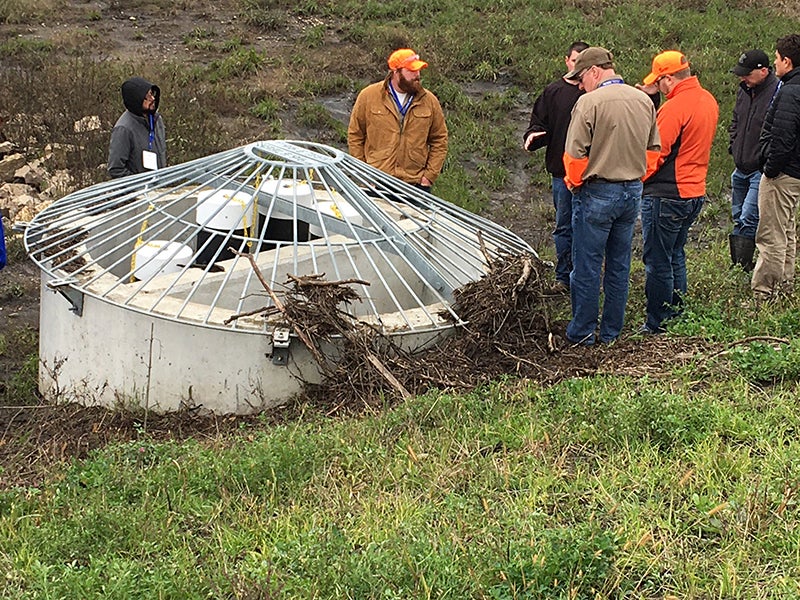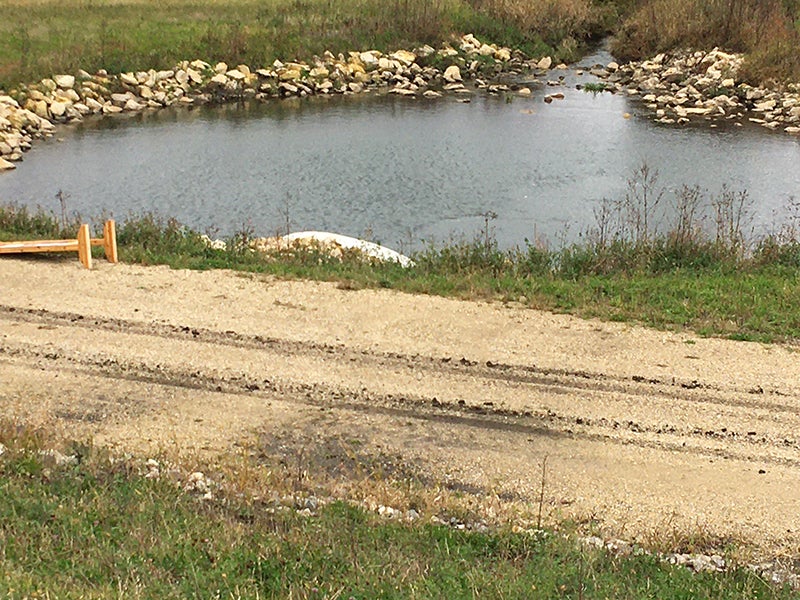Dick Herfindahl: Pheasant opener about more than hunting
Published 7:22 pm Friday, October 18, 2019

- A group of media representatives examine a riser that is used to handle overflow water running into Dobbins Creek. - Provided
Woods & Water by Dick Herfindahl
This past weekend, I attended the 2019 Governor’s Pheasant Hunting Opener, which was held in Austin and Mower County. I had originally not planned to attend this event since I no longer do any pheasant hunting. After I received a phone call from Dan Ruiter, who is the Media Director for the DNR and someone that I had the pleasure of working with during the Governor’s Fishing Opener, I decided to attend. I didn’t attend the hunt or walk with any hunting party, I am not much for walking in tall grass and I am sure they would be grateful for me not slowing them down. I did, however, go on a tour of the rural and urban water connection.
Myself and a handful of other folks were hosted on the tour by Tim Ruzek, Mower County SWCD Water and Plan Outreach Coordinator and Justin Hanson of the Mower County Soil and Water Conservation District. I didn’t really know what they had in store for us, but as it unfolded, the tour took us through downtown Austin where Ruzek pointed out where the water levels were during different floods and showed us what they looked like then and the City of Austin’s extensive flood-protection that is in place.
After we had toured Austin’s waterways, we proceeded out into the country to see the work that is being done by the Cedar River Watershed District to slow the flow of water as it enters Dobbins Creek and eventually into the Cedar River. They showed us what the effect high water running through culverts has on the creek banks, tearing away soil, gravel and silt while pushing it downstream and backing it up over roads.

Pictured is a man-made pool used to collect water running from a 15-foot culvert that runs through a berm, which is a man-made ridge used to hold back water. – Provided
The Dobbins Creek sub-watershed drains into Austin’s Jay C. Hormel Nature Center and East Side Lake before flowing into the Cedar River. The Cedar River Watershed District has completed nine of 25 projects under a $9 million Capital Improvement Plan, which focuses on upland water storage to decrease the amount and speed of storm water flow by 10%.
Once we were out in the country, we stopped at a place adjacent to Dobbins Creek where we got out and walked what seemed quite a way to this old journalist before we arrived at an area where they had what they called a Riser, which is actually an overflow. This is surrounded by a ridge of man-made higher ground called a Berm, which is higher than the surrounding landscape. The rainwater is trapped in that large area and the riser serves as an overflow drain, much like the one on your bathroom sink. When the water gets too high it goes through the riser into a 15-foot wide culvert, which flows into a man-made pool on the other side of the berm.
The water flows through the berm through a 15-foot culvert into the pool which lets the flow go more gradual than a smaller culvert. All of this is intended to slow the flow of water into the creek. I have to say it was a very interesting tour and was well worth the walk and the time spent on a cold windy and sometimes snowy day.
This was just one part of a great event that should make the folks of the city of Austin and the surrounding area very proud. Everything that was done to make visitors feel welcome was great. The event chairman was Sandy Forstner, and the Discover Austin Executive Director is Nancy Schnable, who did a great job of putting this all together. None of this could have happened without the countless number of volunteers who gave their time. It takes many selfless volunteers and a lot of time to put an event like this together. I have to say that they really did a great job.
I can attest to the amount of work it takes by many volunteers to make an event of this magnitude a success after working on the Governor’s Fishing Opener that was held in Albert Lea this past May. I am glad that both Albert Lea and Austin were selected for these events. Just as the Albert Lea Lakes area showed folks from other parts of the state that we do indeed have good fishing and the Austin area showed folks that there are pheasants to be had in Mower County.
Events like these, which are put on each year by the hard working folks at Explore Minnesota and the Minnesota DNR, are not only about hunting and fishing but about showcasing the host community. I’d have to say that the folks in Austin did a bang-up job of pulling it off.
Please remember to keep our troops in your prayers. We must not let ourselves forget those who are still putting themselves in harm’s way so we can enjoy all of the wonderful freedoms we have today.




